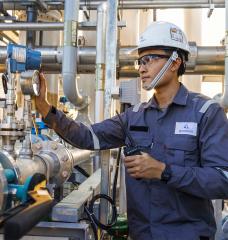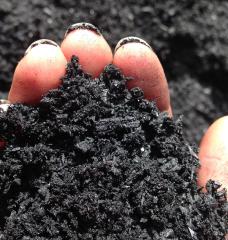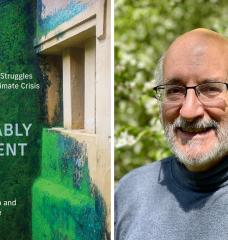
This story by ESI Journalism Fellow Nora Hertel was originally published for The St. Cloud Times, where it appears with additional photos and resources.
___________
By Nora Hertel
LITTLE FALLS — Minnesota agronomist Amy Robak describes budding carbon markets as the wild west.
And she's not the only one who sees it that way.
"There's no regulatory bubble around it," Robak said.
There's still debate about just how much carbon farmers can intentionally draw from the air and deposit into the soil, a process called carbon sequestration.
Robak is working that frontier. She helps farmers change some practices and measure the impact on their soils as they join a new carbon marketplace backed by corporate partners including Land O'Lakes and General Mills.
How do carbon markets work?
Agricultural carbon markets pay farmers to draw greenhouse gases, namely carbon dioxide, from the air and keep it locked in the soil to fight climate change. Plants do this naturally through photosynthesis; farmers encourage it by limiting their tilling, grazing livestock in crop fields and planting cover crops in the off season or between row crops.
Corporations pay for those credits through brokers to offset their carbon pollution.
By the end of August, voluntary carbon market transactions were near $750 million globally for the year, according to an Ecosystem Marketplace Insights Report, putting 2021 on track to set a new annual record since the Ecosystem Marketplace launched in 2005. The trading of greenhouse gas emissions dates back to the early 1990s, but it has accelerated this year due to a rapid increase of net-zero, carbon neutral and other climate change-related commitments from corporations.
More: Minnesotans are helping to sequester carbon for big US companies. Here’s what that means
Consumers are demanding more sustainable practices as the effects of climate change are increasingly visible and catastrophic. Countries around the world are working to meet goals set in the 2015 Paris climate agreement and keep global temperature rise this century below 1.5 degrees Celsius when compared to pre-industrial levels. That's about 2.7 degrees Fahrenheit.
In Minnesota, average temperatures have risen 1 degree Fahrenheit to 3 degrees Fahrenheit, depending on the part of the state. Farmers are being recruited here to help combat climate change by capturing carbon, even as the science and policy of carbon markets is unsettled.
What's the risk?
In late August, Robak stepped through a field lush with new pea shoots, kale, clover and sorghum sudangrass. All are cover crops planted as part of a pilot program that will pay farmers if their soils show a marked increase in carbon.
Farmers plant different cover crops to add nutrients to the soil, absorb excess nutrients or produce something their livestock can eat. Radishes, for example, can absorb nitrogen from the soil, which is good for water quality.
Robak, lead nutrient management specialist and certified crop advisor for Centra Sota Cooperative in Little Falls, is helping enroll producers into a carbon market pilot. The costs to make the changes are covered by the member-based nonprofit running the market called the Ecosystem Services Market Consortium, or ESMC.
"Right now, in the world of carbon markets, everyone seems to have their own offer out there," said Robak. "There is no really good regulation set around it. There's no USDA farm programs around it, nothing like we have in the crop insurance world."
And there is no consensus on how to best assess soil for carbon gains.
"It's very difficult and expensive to do," said Danny Cullenward, policy director for CarbonPlan, a nonprofit that analyzes climate solutions. "That means a lot of these efforts are either trying to confront the fact that it would be very expensive to carefully measure the outcomes in these efforts or maybe they want to cut corners and find ways not to directly measure or measure cheaply."
Big companies, governments and environmental groups are willing to bet on agriculture and other working lands, like forests, to sequester excess carbon that's been released into the atmosphere primarily through combustion of fossil fuels.
Planting cover crops could sequester 6.4 million metric tons of carbon dioxide in Minnesota, according to a January report from The Nature Conservancy. Reducing tillage practices and improved management of fertilizers and nutrients could reduce emissions by more than 4 million metric tons.
That is the hope.
"I do think that we run the risk of really losing credibility in the eyes of the public if these markets fail. Because the hype has been so high," said Anna Cates, Minnesota's state soil health specialist. "That's where I see the greatest risk."






